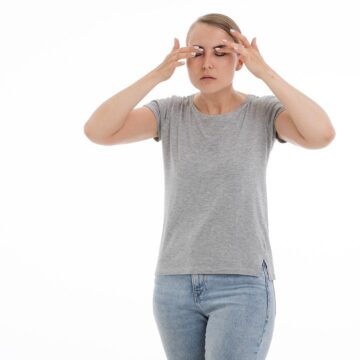
-
- Treating chronic dry eye depends on several factors, including its severity and cause.
- Chronic dry eye may be caused by an infection or tears drying quickly.
- Some lifestyle changes, such as blinking often and staying hydrated, may help relieve dry eye symptoms.
Dry eye is a condition where your eyes can’t produce enough tears, which may be due to tears evaporating too quickly, or an inflammation affecting the eye. Environmental factors usually cause temporary dry eye, while the chronic dry eye is often due to an underlying condition like skin diseases near the eyes or affecting the eye glands, or allergies.
There are numerous ways to treat dry eye, ranging from OTC drugs to natural remedies and therapies.
Here are some of them:
Medication and Procedures

1. Over-the-counter (OTC) drugs
The usual treatment for moderate symptoms of dry eye is OTC eye drops called artificial tears. They work to moisten your eyes, and you may need to apply them several times a day. You can also use ointments, which coats your eyes better than eye drops. However, they tend to make vision blurry, so it’s best to use them before bedtime.
2. Prescription medications
Most medications given by doctors reduce eyelid inflammation. Swollen eyelids may prevent your oil glands from giving your tears some oil, making your tears evaporate too quickly. Some antibiotics also help stimulate oil production in the eye glands. If inflammation is causing your dry eye, your doctor may prescribe antibiotics or prescription eye drops that are anti-inflammatory.
3. Eye inserts
When OTC eye drops don’t work, small, clear tubes of medication called eye inserts might help. You use the medication as you would use contacts, and it works to keep your eye moist throughout the day.
4. Procedures
Besides prescription and OTC medications, the following procedures may help treat chronic dry eye:
- Closing your tear ducts with removable punctual plugs that are made of silicone, so tears stay in your eyes longer.
- Using scleral or bandage contact lenses designed to protect the eye surface and prevent moisture from escaping too quickly.
- LipiFlow thermal pulsation, a treatment to clear blocked oil glands by placing a shield that looks like a large contact lens over your eye, behind your eyelids, and outside your eyelids to apply heat.
Natural treatments

- Hold a warm, wet cloth over your eyes for five minutes.
- Massage your eyelids with a mild soap.
- Take Omega-3 supplements, which reduce inflammation in your body.
- Use castor oil eye drops, which helps slow down tear evaporation.
Alternative therapies

Acupuncture and intense-pulsed light therapy are two types of alternative therapy that may reduce dry eye symptoms.
According to a study, acupuncture may reduce pain and inflammation, decreasing eye irritation, and improving dry eye symptoms.
One study suggests that Intense pulsed light (IPL) therapy, which is typically used to reduce rosacea and acne symptoms, can relieve dry eye symptoms.
Lifestyle changes

Some lifestyle changes may also help relieve your chronic dry eye symptoms, such as:
- wearing sunglasses with side shields
- blinking often when reading or using a computer
- using a humidifier
- staying hydrated
- avoiding smoking and secondhand smoke
Source: Healthline
